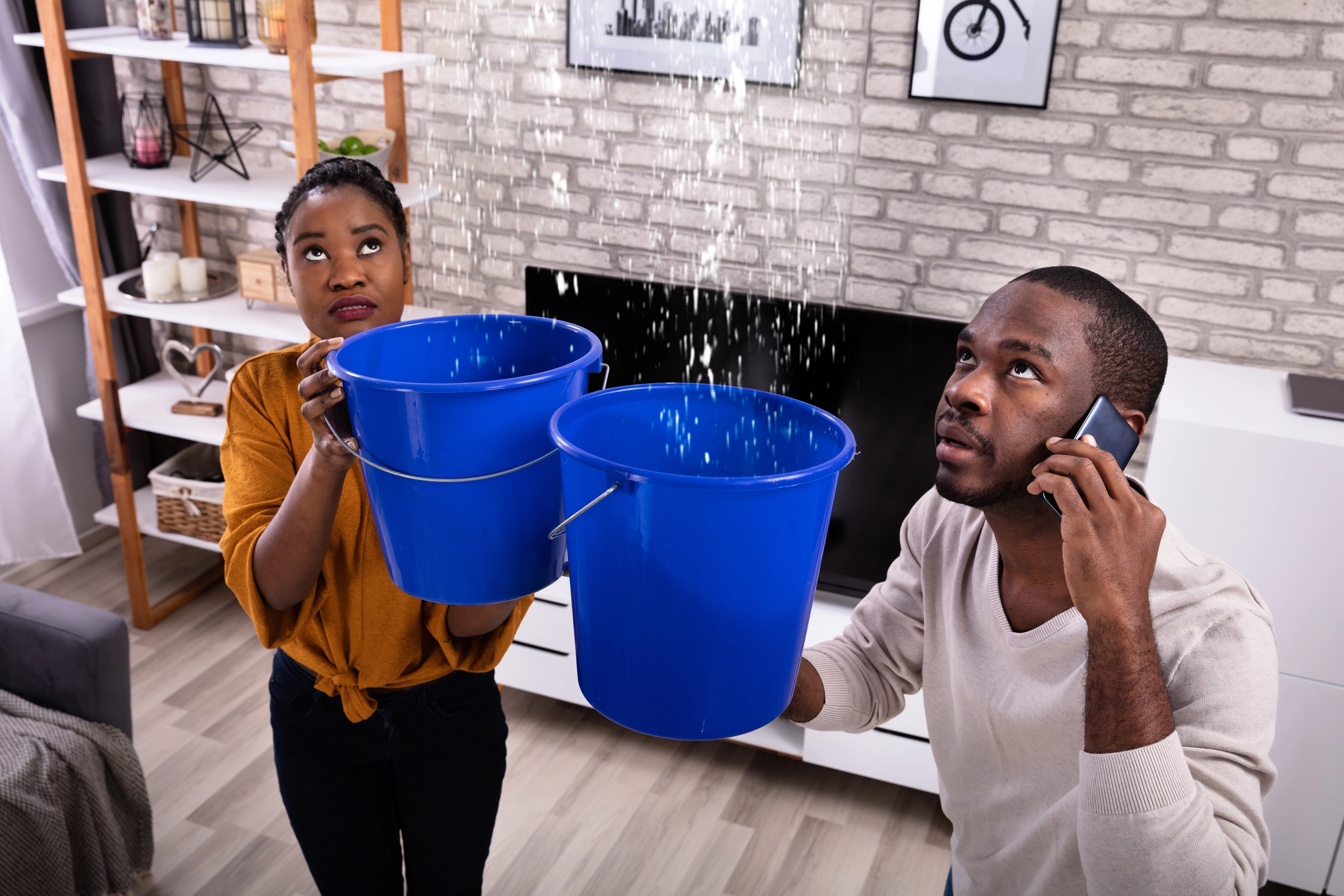Important Steps to Adhere To for Effective Water Damages Remediation in your house
When confronted with water damage in your home, understanding the important actions for efficient reconstruction can make all the difference. You need to examine the damage and assurance safety and security prior to dealing with the trouble. Stopping the source of water is important, however it's just the start. As soon as you have actually managed that, there's a series of activities you have to require to protect your property from additional concerns. Allow's discover what you need to do next.
Evaluate the Damage
The initial step is to evaluate the damages thoroughly when you uncover water damages in your home. Start by recognizing the source of the water breach. Look for leaks, ruptured pipes, or various other issues triggering the issue. Next, analyze the impacted areas for noticeable signs of damage, including staining, mold and mildew, or bending growth. Do not neglect to look in hidden areas like behind walls or under floor covering, as water can permeate right into these areas unnoticed.Document the damage by taking clear images and notes. When discussing the scenario with your insurance coverage provider or repair experts, this will aid you. Pay interest to the sort of materials impacted, as different products call for different remediation strategies. Ultimately, assess the degree of the damage. Is it minor or extensive? Recognizing the scope will assist you in determining whether to manage it yourself or hire the experts for a much more comprehensive restoration procedure.

Make certain Security
Prior to you begin any type of repair work, guaranteeing your security is vital. First, examine the problem of your home. If the water's deep or if you discover electrical dangers, don't enter the location. Switch off the electrical power and gas supply to prevent accidents. Use safety equipment like handwear covers, masks, and boots to protect on your own from contaminants or mold.It's crucial to remain aware of your environments; expect sharp objects and slippery surfaces. If the water is from a sewer backup, treat it as contaminated materials. Maintain pet dogs and children away from influenced locations to prevent exposure.Once you have actually taken these precautions, you can continue with the reconstruction procedure. Remember, your safety comes first, and if you're ever not sure, it's ideal to consult a professional. Taking these actions will aid ensure you prepare to deal with the remediation safely and successfully.
Stop the Source of Water
After ensuring your safety, the next step is to quit the source of water. Determine where the leak is originating from. Maybe a ruptured pipe, a defective home appliance, or even heavy rain entering through a damaged roofing. Transform off the main water supply to your home to stop more flooding if it's a plumbing issue. For appliances, unplug them and close off their water system valves.If the source is outside, like rain, attempt to divert it away from your home making use of sandbags or various other obstacles. For minor leaks, you could be able to utilize tape or a sealant briefly till a specialist can repair it. Bear in mind, addressing the resource promptly is crucial to reducing damage and avoiding mold and mildew development. As soon as you've stopped the water, you'll be in a better position to proceed to the next steps in the restoration procedure.

Get Rid Of Excess Water
Act promptly to get rid of excess water, as standing water can lead to more substantial damages and mold development. Gather your tools: a wet/dry vacuum, containers, and towels. If the water is superficial, you can make use of towels to saturate up the moisture. For much deeper water, a wet/dry vacuum is your best choice. Make certain to empty the vacuum cleaner regularly to prevent overflow.If the water is infected, like from a sewer back-up, use protective equipment, including gloves and masks, to maintain on your own safe. Once you've gotten rid of as much water as feasible, check for covert pockets of dampness in corners and under furnishings, as these can nurture mold.Don' t fail to remember to switch off electric appliances and power outlets in damp locations to protect against risks. This initial action is essential in lessening damage and setting the phase for an effective repair process.
Dry and Dehumidify the Location
As soon as you have actually removed the excess water, it's important to completely dry and evaporate the location extensively. Begin by utilizing dehumidifiers properly to pull dampness out of the air and avoid mold and mildew development. Watch on moisture levels to ensure the area dries entirely.
Eliminate Standing Water
To effectively take on water damages, you require to concentrate on eliminating standing water as quickly as possible. Begin by gathering essential devices, like a wet/dry vacuum cleaner or a pump, depending on the volume of water. If the water is superficial, a vacuum needs to do the trick. For larger amounts, a pump is a lot more reliable. While working, make certain to put on protective equipment to keep on your own secure from pollutants. As you get rid of the water, take notice of hidden areas like under furnishings or in corners where water may accumulate. Your room will certainly start to dry out when you have actually eliminated the bulk. This action is necessary, as sticking around water can bring about mold growth and more substantial damages.
Use Dehumidifiers Properly
Just how can you properly use dehumidifiers to completely dry and evaporate your area? Start by placing your dehumidifier in one of the most afflicted area, ideally where water damage is most extreme. Make certain to close all doors and windows to produce a closed atmosphere. Switch on the dehumidifier and set it to the suitable humidity level, normally around 30-50%. Vacant the water collection tank regularly, or consider making use of a version with a continuous drainage choice for ease. Ideally, utilize fans to boost air movement, assisting the dehumidifier job extra efficiently. Keep the dehumidifier running till you're certain that the location is extensively dried, stopping mold development and additional damage (Flood Damage Restoration). This step is essential for reliable water damages restoration
Screen Moisture Levels
Monitoring moisture degrees is important throughout the drying process, as it aids ensure your area continues to be devoid of excess wetness. Buy a reliable hygrometer to track moisture properly. Ideally, you want to maintain degrees between 30% and 50%. You may need to adjust your dehumidifiers or fans to enhance airflow if moisture readings climb above this range. Inspect the readings consistently, particularly in locations vulnerable to dampness, like washrooms or basements. Take into consideration raising ventilation or using additional dehumidifiers if you see consistent high moisture. Remaining on top of these degrees not just speeds up the drying out procedure however also prevents mold development, guaranteeing your home keeps secure and comfy.
Tidy and Disinfect Affected Surfaces

Bring back and Fix Your Home
After cleaning and decontaminating the affected locations, it's time to recover and fix your home. Begin by assessing the damages. Inspect for architectural concerns, like deteriorated walls or floors, and resolve any kind of required repairs. Changing harmed drywall or floor covering is crucial for both aesthetics and safety.If your furniture or personal belongings were impacted, consider whether they can be salvaged or require replacement. Clean or skillfully bring back items where possible.Next, touch and repaint wall surfaces up any areas that need focus. This not only enhances appearance yet likewise protects surface areas from future water damage.Don' t neglect to check your plumbing and home appliances for leakages, guaranteeing every little thing's operating correctly. Consider installing a dehumidifier to protect against future moisture concerns. By taking these actions, you'll recover your home to its previous glory more info and create a much safer living environment.
Frequently Asked Concerns
For How Long Does Water Damages Restoration Generally Take?
Water damages reconstruction generally takes anywhere from a couple of days to several weeks, depending upon the level of the damages (Smoke Damage Restoration). You'll wish to analyze the circumstance promptly to lessen further complications and assure proper restoration
Will My Insurance Cover Water Damage Reconstruction Costs?
Your insurance policy may cover water damage reconstruction costs, yet it depends upon your policy. Inspect your protection information and call your insurance coverage representative to clarify what's included and what you need to file an insurance claim.
Can I Handle Water Damage Remediation Myself?
You can manage water damages remediation yourself, but it's vital to analyze the situation. You may desire to call professionals if it's comprehensive. Constantly prioritize safety and security and assure you've got the right tools.
What Are the Indications of Hidden Water Damage?
You may notice indicators of concealed water damage like deformed wall surfaces, musty odors, or discoloration. If your floorings feel spongy or you place mold and mildew, it's time to examine even more before the scenario intensifies.
Just How Can I Prevent Future Water Damage in My Home?
To avoid future water damage in your house, you ought to regularly examine plumbing, seal fractures, maintain seamless gutters, and warranty proper drainage. Installing a sump pump and dampness barriers can likewise help maintain your area dry. When you find water damages in your home, the initial step is to analyze the damages extensively. Act rapidly to eliminate excess water, as standing water can lead to extra extensive damages and mold and mildew development. To successfully deal with water damage, you require to concentrate on getting rid of standing water as quickly as possible. As you eliminate the water, pay interest to concealed areas like under furnishings or in corners where water may collect. Water damages remediation usually takes anywhere from a couple of days to a number of weeks, depending on the degree of the damages.
 Heath Ledger Then & Now!
Heath Ledger Then & Now! Julia Stiles Then & Now!
Julia Stiles Then & Now! Kelly Le Brock Then & Now!
Kelly Le Brock Then & Now! Pauley Perrette Then & Now!
Pauley Perrette Then & Now! Ryan Phillippe Then & Now!
Ryan Phillippe Then & Now!